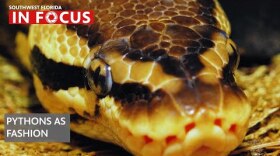Shorebirds are returning in record numbers to the beaches most devastated by Hurricane Ian — further good news for the large birding community in Southwest Florida.
The Sanibel-Captiva Conservation Foundation recently completed its monthly shorebird surveys on the islands and found a noticeable spike in total bird numbers as well as a slight increase in species diversity.
In October, just under 2,000 birds representing 24 species were seen. The most recent count saw the number of birds more than double to 4,734 and three more species were represented – including an early bird.
“One species of particular note that was observed this month is the Franklin’s gull, which is usually documented at least once on our surveys over the winter season,” said Aaron White, a shorebird technician with the conservation foundation.
Bird watchers in Southwest Florida had expressed concern several weeks ago that nearly two months after Hurricane Ian made landfall in the region the bird populations had not recovered.
A passionate group, birders were concerned such a slow-moving, Category 4 hurricane may have killed so many birds that some species were gone, at least temporarily, in Southwest Florida.
Not only have the overall number of birds in the region returned to their normal levels, but November’s count also was the second-highest number of birds recorded in the month during the past five years.
It turns out terns, pelicans and gulls were hiding, flying back, or regrouping.
A pair of American bald eagles, Harriet and M15, rebuilt their nest in what seems like record time for a reason: Harriet gave birth to a second egg just days ago and is incubating them both in their rebuilt nest, which has had an online-connected camera watching it for 12 years.
White said Franklin’s gulls are most easily distinguished from similar looking laughing gulls by their smaller overall size, smaller bill, and thick, white eye ring. The Franklin primarily nests in freshwater marshes across the central provinces of Canada and some parts of the north-central United States.
Franklin’s gulls migrate 4,000 to 7,000 miles — one of the longest migration distances among gull species —to spend their winters on the western coastline of South America.
“Although Florida’s not along their usual route, small numbers of Franklin’s gulls are seen in the state while on their migratory journey,” White said. “One possible reason they turn up outside their primary migration route could be the effect of weather.”
It’s inevitable that some members of most every species will die during a hurricane. Many birds sense impending doom when a big storm rolls in and tuck in somewhere safe, or fly away. Other avian species are strong enough to fly right through a hurricane and live to squawk about it.
Franklin’s gulls are known to be social during migration, often mixing with large flocks of other gull and tern species.
“Keep your eyes peeled for the Franklin’s gull next time you stumble across a shorebird flock,” White said. “Just be sure to give them plenty of space to regain their energy for their journey farther south.”
Environmental reporting for WGCU is funded in part by VoLo Foundation, a non-profit with a mission to accelerate change and global impact by supporting science-based climate solutions, enhancing education, and improving health.
Sign up for WGCU's monthly environmental newsletter, the Green Flash, today.
WGCU is your trusted source for news and information in Southwest Florida. We are a nonprofit public service, and your support is more critical than ever. Keep public media strong and donate now. Thank you.








